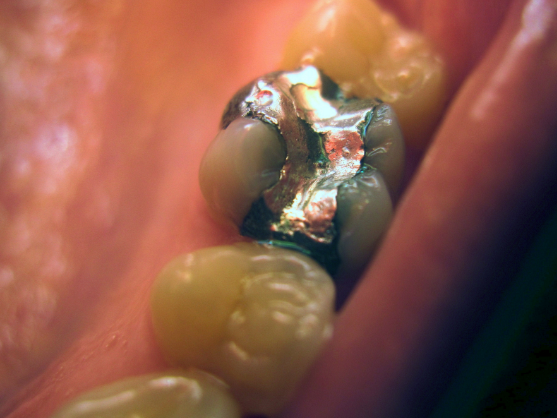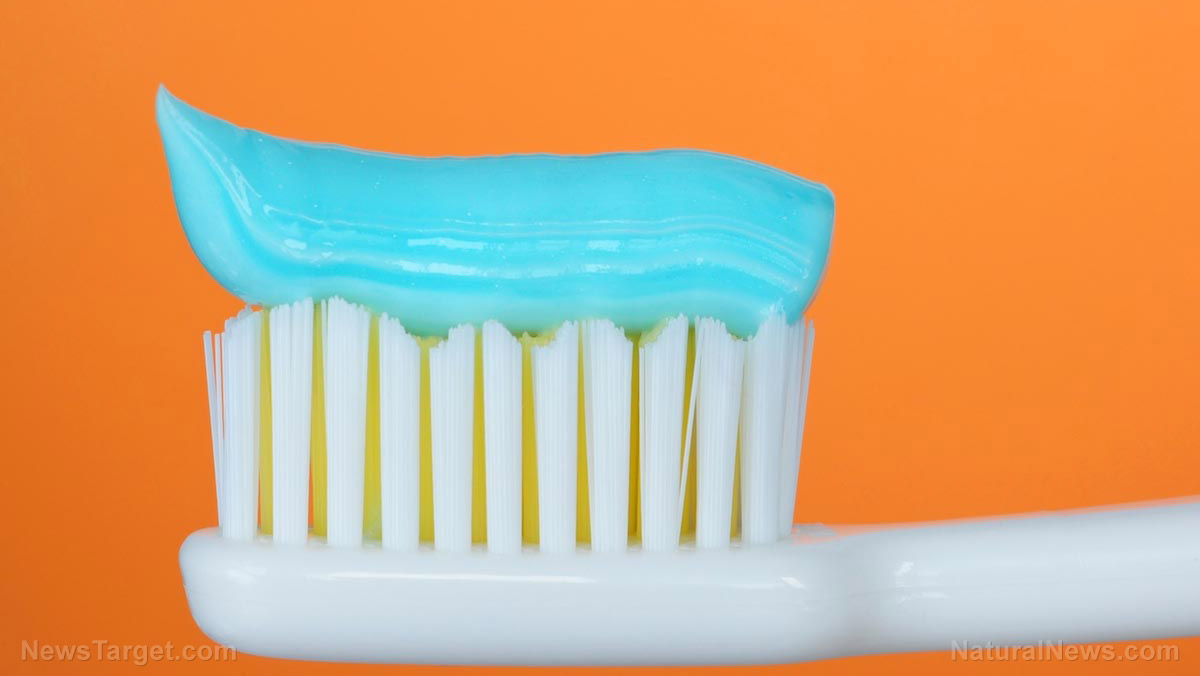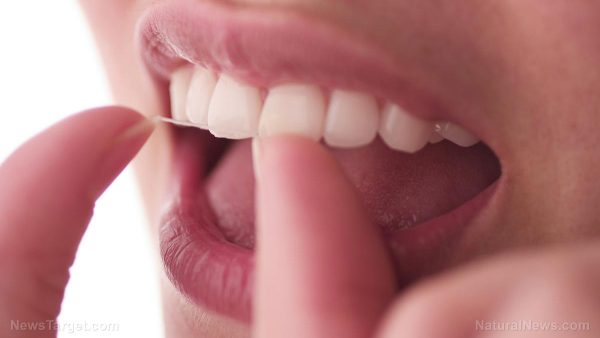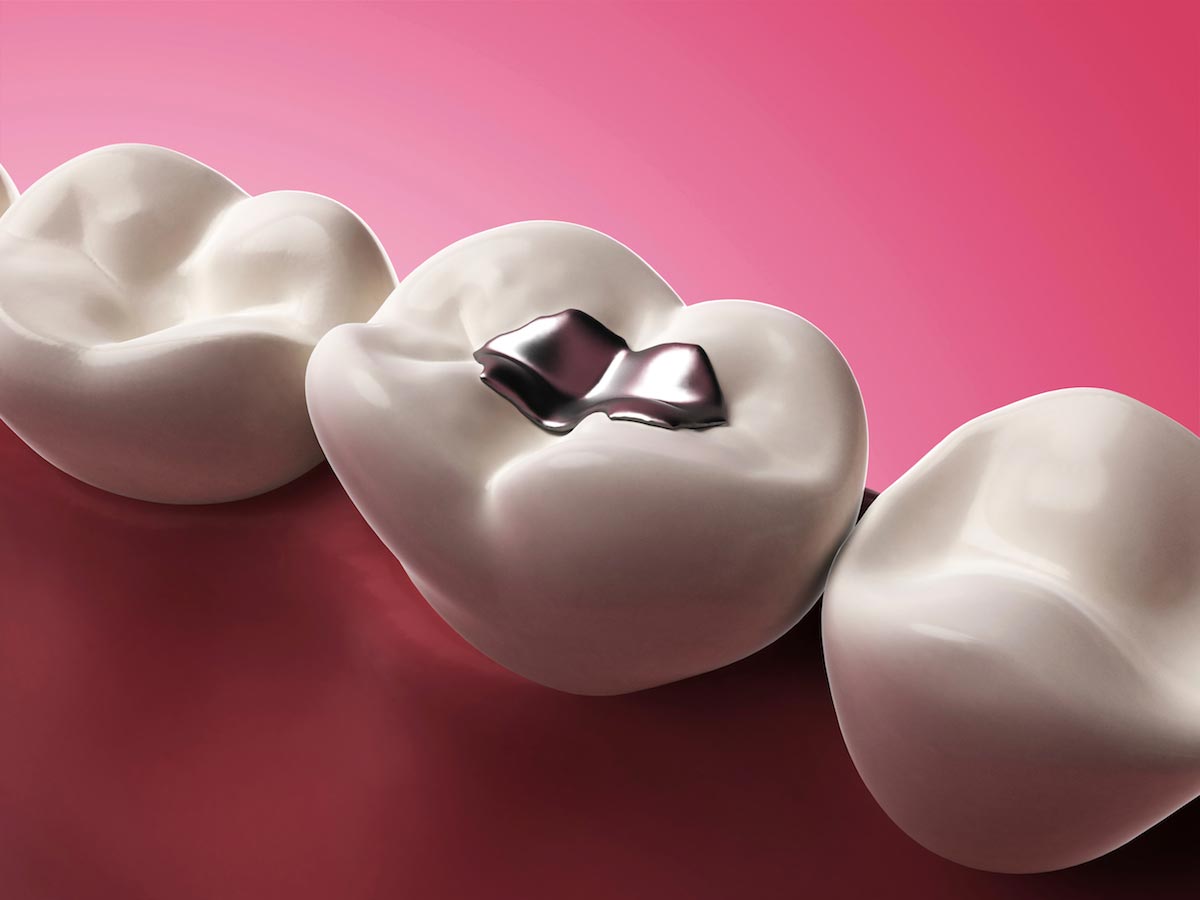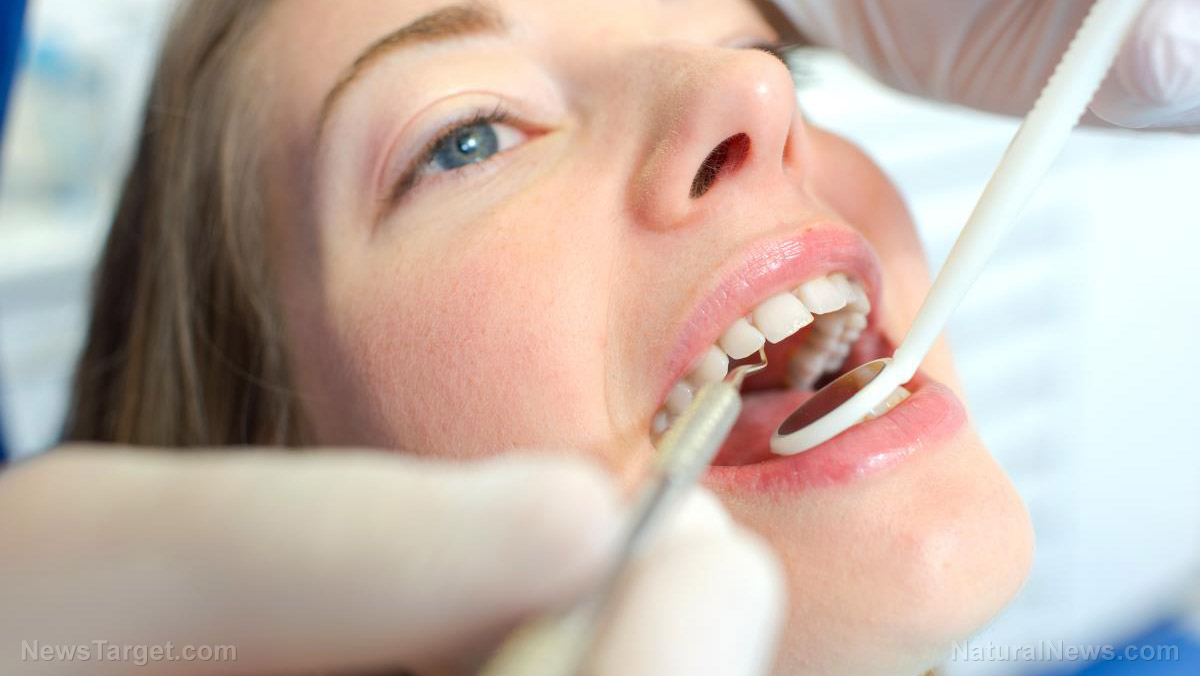The basic principles of biocompatible dentistry include:
- Avoidance of dental materials that may be toxic.
- Elimination of toxins from existing dental restorations.
- Prevention and reversal of dental diseases through proper nutrition.
- Treatment of the biological basis of gum disease rather than symptoms.
- Prevention and correction of physical imbalance in the bite (malocclusion).
Connecting the teeth to the body
The biological dentist recognizes a connection between the teeth and the body in more ways than one. Acknowledging ancient principles, the holistic dentist believes that every tooth has an innate connection with some part of the body. This means that a diseased tooth can harm its correlating body part. For instance, On the meridian tooth chart, the wisdom tooth is associated with the heart. The front incisor to the sinus and the kidneys, and the “eye” tooth to the eye as well as the knee, hip, and liver.
Due to the state of the world and the environment, it is virtually impossible to preserve health through the total avoidance of toxins via cell phone radiation, stress, cosmetics, food, and other factors. What we can do, and what the biologic dentist assists with, is avoiding as many toxins as possible through dental care and healthy lifestyle choices.
Amalgam on its way out?
Recently, the BIO Intelligence Service released a report to the European Commission recommending that dental amalgam, along with mercury in batteries, be phased out of use. At this time, there is speculation that mercury will be significantly reduced through this phasing out in Europe by 2018.
The elimination of mercury in commercial items cannot happen soon enough and there is hope that the U.S. will take Europe’s lead and also phase out the use of dental amalgam, in particular. At this time, about half of the dentists in our country avoid dental amalgam, and there is a much larger (77%) percentage of consumers who are receiving the vital information they need regarding mercury in amalgam fillings. Consumers, faced with this knowledge, are willing to pay for mercury-free alternatives.
The European Commission’s push against the use of mercury dental amalgam has been ongoing for seven years. Most dental organizations, however, continue to advocate for amalgam, reporting that it is safe even though multiple studies suggest otherwise. In response to evidence on the toxicity of mercury, Sweden has phased out of its use completely. Several other countries in Europe are also phasing out or restricting the use of amalgam. Unfortunately, the reaction of the United States has been shockingly slow in comparison to European counterparts.
The “silver filling”
When the dentist recommends a “silver filling,” the perception given is actually quite deceptive. The standard “silver filling” is, in fact, approximately 50 percent mercury content. Mercury is an element that takes on the form of vapors when heated. As such, mercury seeps from “silver fillings” on a daily basis. Due to the fact that the body lacks the ability to natural eliminate the toxin, mercury accumulates in various tissues and cells, posing a threat to health. Even with this evidence, the American Dental Association has stood behind mercury dental material.
While the recommendations of the BIOS study have not yet been adopted, the Mercury Policy Project and the European Environmental Bureau have welcomed the study. Project coordinator Elena Lymberidi-Settimo has stated that the study shows just how vital it is to phase out the use of mercury, especially in light of the availability of alternative materials. In an interview with PR Newswire2, she stated that mercury should now be “the exception rather than the rule.”
Dental amalgams and the environment
The research performed for the BIOS report focused on the environmental impact of dental amalgam rather than the potential effects to health when mercury is present in dental fillings. According to the report, dental amalgam is one of the primary emissions of mercury in the environment. The U.S. is in the same predicament. Though the focus of the study was environmental, there remains a wealth of evidence through this work that the placement of mercury fillings in teeth poses a significant threat to health.
According to the BIOS report, the people in the EU are exposed to excessive levels of mercury due to current levels of pollution. Additionally, certain people are at a greater risk as a result of age (with children most vulnerable) or dietary choices, with fish consumption a high-risk for exposure. The risks to health, according to researchers, include diminished intellectual capacity and neurological effects.
Risks of mercury exposure come not only from environmental pollution but also from harm to wildlife populations and to disturbances in the microbiological activity in soil. The mercury released into the ecosystem in such ways causes substantial impact on its integrity. The species whose primary food source is fish, including loon, eagles, river otters, and more, have displayed the adverse behavioral and/or health effects of mercury exposure. These effects include altered or reduced mating habits, muscular and neurological effects, and a diminished ability to avoid predators, catch food, raise offspring and more. Each effect of diminished intellectual ability increases the instability of the overall population.
Calculations based on the concept of “critical load” show that no less than 70 percent of the ecosystem in Europe is at risk of mercury overload, with several areas in southern, central, and western Europe already exceeding critical loads of mercury.
The World Health Organization chimes in on dental amalgam
Shortly before the European Commission report came a report from the World Health Organization encouraging a “moving away” from dental amalgam in lieu of alternative dental materials. This report was the result of a 2009 meeting focused on oral health. The reasons for the position taken by WHO include:
- A “significant amount of mercury” is released into the environment from dental amalgam. Effects are seen in the soil, groundwater, and surface water, as well as the general atmosphere.
- “General health concerns” exist in relation to dental amalgam. An observation from the Norwegian Dental Biomaterials Adverse Reaction Unit was included in the report, suggesting that a high percentage of side-effects noted from fillings were related to amalgam.
- There are alternative materials available. The WHO report states not only that alternatives to dental amalgam exist, but that many of them offer superior results, especially in children, who are most vulnerable to the neurological effects of mercury exposure. Even more important than the longevity of the filling itself, the WHO states that:
Resin material adhered to the tooth for repair causes less destruction of tooth material and thus allows the tooth structure to survive longer than it would otherwise. The toxic effects of mercury were also acknowledged in this WHO report, which described mercury as “highly toxic and harmful to health.” About 80 percent of mercury vapor that is inhaled is absorbed by the lungs and the blood, leading to damage in the immune, respiratory, digestive, and nervous systems, as well as the kidneys and lungs. The effects of mercury exposure in the body can be seen as developmental delays and attention deficit in children, deficits in fetal development, emotional instability, insomnia, paralysis, impaired hearing and vision, and tremors.
Cost-effectiveness of dental amalgam
HIstorically, dental amalgam has been supported as a “necesssity” for affordable dental care. When the environmental impact of dental amalgam is considered, it is easy to see the truth. Via dental amalgam, mercury pollution occurs in:
- Air, due to emissions from dental offices, respiration, sludge incineration, and cremation;
- Water, due to human waste and water release from dental offices; and
- Soil, in fertilizer, landfills, and burials.
When dental mercury is released into the environment, it is converted into methylmercury, an even more toxic form. In water, methylmercury accumulates in fish that are then caught and consumed. The cost of environmental cleanup is extremely high. Studies suggest that, due to the environmental costs of mercury, amalgams are actually more expensive than any other type of filling material.
In a report by PR Newswire, the real cost of amalgams has been questioned due to the extensive environmental impact. Director of the Mercury Policy Project in the U.S., Michael Bender had stated that the real cost of an amalgam would be comparable to or “15 percent more expensive than a composite” if the additional costs of environmental management were factored in.
While the costs of environmental management are high, the cost of doing nothing about the environmental pollution from dental amalgam is even higher. The effects to health are recognized as being neurological problems, especially in unborn babies and children, and also brain damage in this vulnerable population. Due to the multiple pathways through which dental mercury is able to enter the environment, the only way to reduce the threat to the environment – and our health – is to phase out the use of mercury amalgam. Seeing the availability of alternatives, this should not be difficult.
Alternatives are not only available but are preferred by most!
Since alternatives have been available, there has really never been a true need for dental amalgam. Today, especially, this material is interchangeable with many others, including glass ionomers and resin composites. These two materials alone have rendered dental amalgams completely unnecessary. Today, more than 75 percent of the population is informed of the mercury content in amalgams before care, and half of all dentists in the United States do not use dental amalgam at all, offering composite resin as a popular alternative.
Composite resin fillings are made of a mixture of powdered glass and plastic. With this material come a number of benefits, including:
- Environmental safety. In the absence of mercury, the composite filling causes no environmental pollution. The cost, as well, of mercury pollution is halted, saving taxpayer dollars.
- Preservation of healthy tooth structure. Due to the technique in which the composite filling is bonded to the tooth, far less tooth material must be removed. In fact, the composite can add strength to the tooth, leading to long-term functionality and a decreased need for further dental work.
- Long-lasting results. Proponents of amalgam say that this material lasts longer than composite fillings, but studies continually show otherwise.
Mercury-free dentistry is even becoming possible in developing countries, with atraumatic restoration treatment a mercury-free technique being successfully used in areas such as rural parts of Peru, Uruguay, China, Nigeria, Chile, Sri Lanka, Mexico, Hong Kong, Syria, Ecuador, Panama, Thailand, South Africa, Turkey, Zimbabwe, Brazil, India, Tanzania, and even Canada and the United States. This technique incorporates only hand held instruments and adhesive materials, making it ideal for developing countries.
Handling the removal of amalgam fillings: BEWARE!
Health problems may occur as a result of just one amalgam filling. However, rushing into the removal of existing fillings can put health at an even greater risk. When not handled properly, the removal process can release large amounts of mercury into the body at one time. We encourage you . . Please do NOT make the mistake of rushing into amalgam removal with an untrained dentist! Without the proper technique, amalgam removal can lead to ingestion and inhalation that increases the levels of mercury in the body.
Dr. Ra is familiar with the specified technique for amalgam removal outlined by the International Academy of Oral Medicine and Toxicology. The steps involved in safe amalgam removal include:
- Instruction to breathe through the nose, where alternative air is provided via an oxygen mask,
- Placement of a rubber dam, which keeps tiny particles from touching oral tissues,
- Suction with a high-volume evacuator placed near the operative tooth,
- Oral rinsing immediately following the “cutting out” of amalgam,
- In-room air purifiers,
- Facial covering to keep mercury particles from touching the skin
The inappropriate handling of amalgam during the removal process can cause lasting health effects. Dr. Joseph Mercola, trusting health and wellness advocate, reports his own lack of knowledge regarding the proper removal of amalgams lead to kidney damage. Dr. Mercola encourages people to not only find a qualified dentist for amalgam removal but also to take specific steps to improve systemic health in preparation for the procedure. Preparing the body aids in the optimal detoxification of accumulated mercury. Many people benefit from working with a qualified professional to achieve optimal health before amalgam removal.
21st Century dentistry
The claim of those who support amalgam is that material is safe because it has been around for 150 years. The same could be said for performing surgery without washing hands or “bleeding” patients with high fever. These practices, as well were used during the Civil War era. The difference is that they are no longer viewed as practical or even safe. Why, then, do we not see the antiquity of dental amalgam?
The dangers of amalgam, due to mercury content, exist at every stage, including:
- Release of mercury into the environment in the production of amalgam.
- Hazards to dentists, assistants, hygienists, and other office personnel during and after the preparation of amalgam fillings.
- “Silver fillings” are approximately 50 percent mercury, a fact that many dental patients are not told!
- Damage to tooth structure due to the excessive alteration needed to place amalgam.
- Mercury from amalgam is continually released into the body, even crossing the placenta to affect the developing fetus.
- The metallic properties of mercury and amalgam in general can lead to tooth damage as the filling expands and contracts inside of the tooth. Eventually, the repaired tooth will crack under pressure and require further dental work.
- Environmental pollution from mercury persists via respiration and numerous other pathways.
- Fish are affected by this environmental pollution as mercury converts to methylmercury and is absorbed via water. Contaminated fish then eventually make it to the dinner plate.
Turning the tide one step at a time
The truth about dental amalgam has been a long time coming. At one time, dentists were kept silent by a gag rule – and denied their constitutional right to free speech – preventing them from discussing the mercury contained in amalgam fillings. This gag rule fell away once dentists and lawyers joined forces against state dental boards. The Consumers for Dental Choice then worked on the inclusion of information provided to consumers. As a result of their work, many states adopted a “fact sheet” which law mandated be provided to consumers considering restoration with dental amalgam.
Next came the FDA challenge, in which Moms Against Mercury was named as the lead plaintiff. The request of this suit was to force the FDA to issue a ruling on amalgam, something the organization had unfortunately avoided for three decades. The FDA was ordered to comply and release a rule on amalgam by July of 2009. Again, the FDA acted covertly on the matter, burying information on the tremendous effect of amalgam on pregnant women and children.
Amalgam has particularly ill effects on those more vulnerable, including young children and fetuses who are still developing neurologically. These patients are particularly susceptible to the neurotoxicity of mercury vapor. There is little to no information available to show the long-term effects of amalgam in pregnant women and their fetuses, nor in young children, including breastfed infants.
Though multiple petitions have been submitted for the reconsideration of wording in the FDA’s rule and a promise from the FDA itself to announce its rule on amalgam, action has yet to occur years later.
Moving towards mercury-free dentistry
In light of upcoming mercury treaty negotiations, Consumers for Dental Choice chose to highlight the environmental impact of dental amalgam. This approach proved to be not only advantageous at mercury treaty sessions but also effective against proponents of mercury amalgam.
For many years, the way in which antiquated use of mercury amalgam has been perpetuated was through dental schools. If this is what was taught, this is what would be practiced. In an unprecedented move, the NYU College of Dentistry announced a new rule related to the use of amalgam. This rule was the result of the devastation mercury causes to the environment, and it stated that students would no longer be required to perform competency exams for amalgam. Moreover, amalgam restorations would no longer be the primary recommendation for posterior tooth repair. The Consumers for Dental Choice applauds NYU for taking this stance against mercury amalgam.
Like NYU, several U.S. cities and townships have begun to speak out against the pollution caused by dental amalgam:
- The Ohio chapter of Consumers for Dental Choice worked to have pro-mercury dentists held responsible for the cause of water pollution in Lake Erie: dental amalgam.
- The Tennessee community of Spring Hill has fought against the construction of a crematory from which mercury vapors will be released. Each year, the U.S. is burdened with 5- to 70 tons of mercury via these types of atmospheric emissions. The group Citizens for a Better Spring Hill is just one of many fighting to protect their families from unnecessary exposure to mercury.
Healthy new practices
Thanks to the consistent information brought to light via the efforts of Consumers for Dental Choice and other organizations, we are seeing significant growth in the area of mercury-free dentistry. As many as half of the dentists in our country use only amalgam alternatives, and dentists are becoming more educated through organizations like the International Academy or Oral Medicine and Toxicology and the International Academy or Biological Dentistry and Medicine.
International unity against mercury fillings
Where the idea of mercury-free dentistry was once only a dream, this goal is now in sight not only in the U.S. but around the world.
The mercury treaty sessions have paved the way for all countries to improve the way that mercury is handled. In a series of sessions, to which representatives from all countries were invited, all forms of mercury were to be discussed. This included mercury products as well as the processing of mercury, mercury emissions, mercury waste, storage, and mining. The sessions occurred over a three-year period, and focused on finding solutions to the global crisis of mercury pollution.
The challenge of global organization is great, considering how to achieve agreement between all nations, how to build the framework to address amalgam as the environmental issue it is, and how to gain the support of environmental organizations around the world.
In the treaty sessions, these objectives were progressed by the group the World Alliance for Mercury-Free Dentistry, lead by Charlie Brown. This coalition included experts from countries including Europe, Africa, Asia, and the Americas, leaders of Consumers for Dental Choice chapters, dentists, international policy specialists, physicians, and more. At each session, the group discussed the various dangers of mercury and refuted standings taken by the World Dental Federation, which supports the use of mercury amalgam.
At the first sessions in 2010, the World Alliance for Mercury-Free Dentistry stood alone. After the initial meeting, the coalition was joined by environmental and consumer groups as well as medical societies. The second treaty session, as well as the third and fourth sessions, saw advocates for mercury-free dentistry making significant progress for their cause. The opposition was outpointed, outworked, and outflanked by professionals promoting the phasing out of dental amalgam.
Throughout the fourth session of the mercury treaty, there was a strong push by proponents to debate the health effects associated with mercury. The World Alliance and Consumers for Dental Choice remained stout in their stance on the environmental impact of mercury pollution stemming from dental amalgam. The group distributed to the delegates at the session the economics report showing the true cost of an amalgam filling when the environment impact is factored in. This cost, according to the report, can be as much as $87 more than a composite restoration. It is this vital environmental information that has lead to growing support from influential organizations and government agencies around the world.
The result of the mercury treaty sessions is a significant win for mercury-free proponents. Wording in the agreement signed at the Minamata Covention states that participating countries, of which the United States is one, will phase out the use of certain manufacturing practices as well as the use of mercury in various products, including dental amalgam.
Dr. Ra is proud to be a biological, mercury-free dentist serving the area of Upland, CA. We invite you to learn more about our practice by calling (909) 320-2727.

